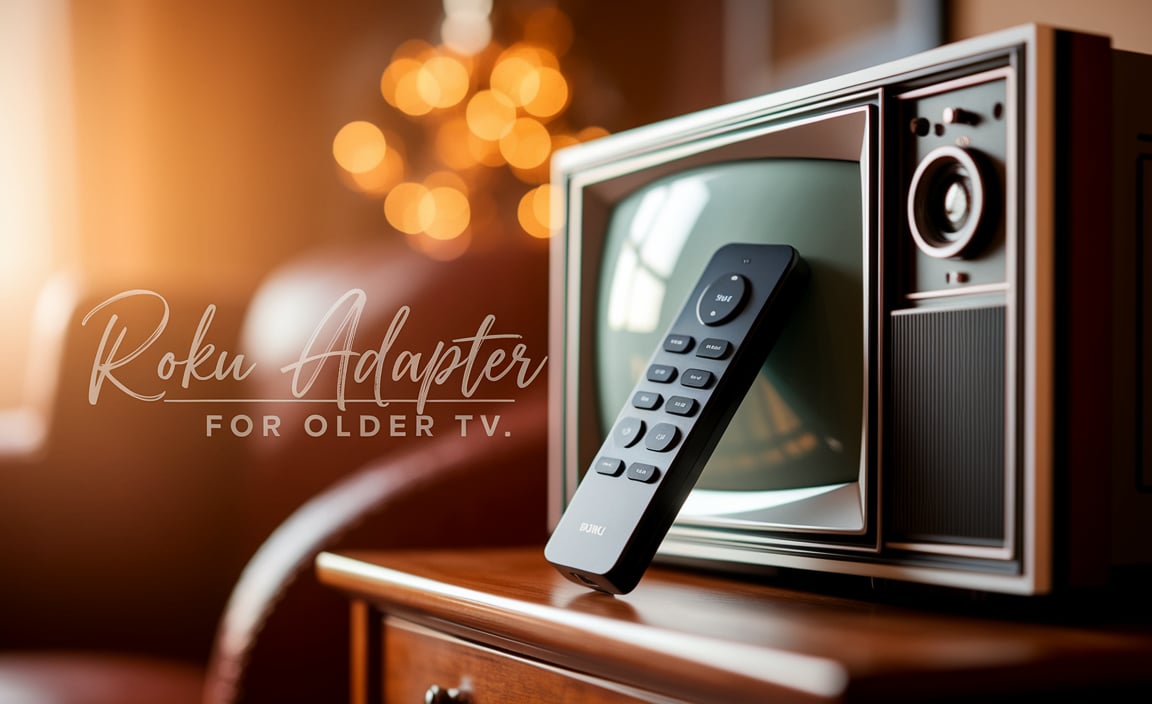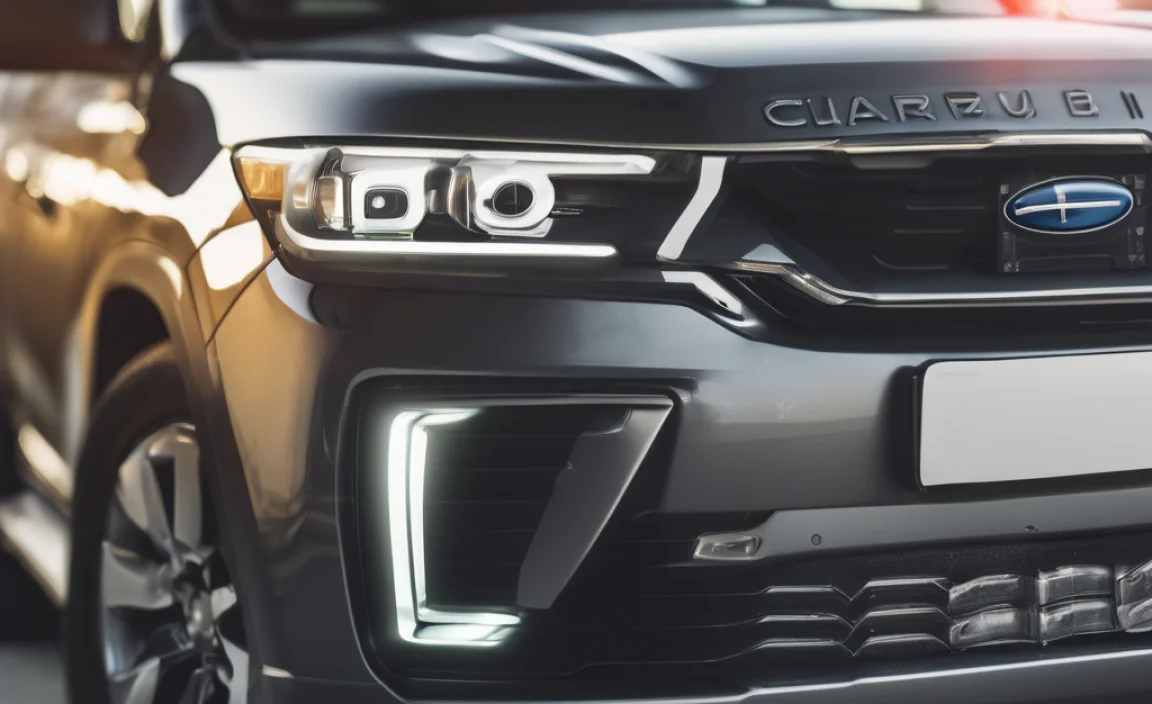Quick Summary:
An adapter for your dryer is a crucial part that connects your appliance to the household electrical supply. If your dryer plug doesn’t match your wall outlet, the right adapter is an essential fix to ensure safe and proper operation, preventing damage and electrical hazards.
Understanding Dryer Adapters: Your Essential Fix for Power Connections
Is your dryer not powering up because the plug doesn’t quite fit your wall socket? You’re not alone! This is a common hiccup for many homeowners, especially when moving into a new place or replacing an appliance. It can be frustrating when you just want to get a load of laundry done, and a simple connector seems to be standing in your way. But don’t worry, this is usually a very straightforward fix. We’re going to break down exactly what a dryer adapter is, why you might need one, and how to get the right one for your situation, ensuring your dryer is connected safely and works perfectly.
Think of a dryer adapter as a simple translator for electricity. Your dryer needs a specific type of power to run, and your home has a specific type of outlet. Sometimes, these don’t match up perfectly. This is where an adapter saves the day. It bridges that gap, allowing your dryer to receive the power it needs without any fuss or danger. We’ll cover everything from identifying your dryer plug type to finding the correct adapter, making this a stress-free part of keeping your home running smoothly.
What Exactly is a Dryer Adapter?
A dryer adapter, often called a dryer plug adapter or a dryer range adapter, is a device that allows you to connect your electric dryer’s power cord to a different type of electrical outlet than it was originally designed for. It’s essentially an electrical adapter that changes the configuration of the prongs on one end to match the slots on the other.
Most electric dryers in the United States use a 240-volt power supply. However, the specific configuration of this connection can vary. Older homes might have a 3-prong outlet, while newer homes typically have a 4-prong outlet. These different configurations are for safety and operational reasons, supporting different electrical needs and grounding methods.
Why Do You Need a Dryer Adapter?
The most common reason for needing a dryer adapter is a mismatch between your dryer’s plug and your home’s outlet. This can happen in several scenarios:
- Moving into a new home: The previous owner or the builder might have installed a different type of outlet than your dryer requires.
- Replacing an old dryer: An older dryer might have a 3-prong plug, and your home might have been updated with a 4-prong outlet (or vice-versa).
- Appliance installation mishap: Sometimes, during the initial setup of a dryer, the wrong type of cord or outlet might be present.
Using the wrong connection can be a safety hazard. It could lead to your dryer not functioning correctly, overheating, or even posing a fire risk. An adapter, when chosen correctly, ensures a safe and compliant connection.
Understanding Dryer Plug and Outlet Types
This is the most critical step in finding the right adapter. Dryers typically use specific configurations for their power supply. The main difference you’ll encounter is between 3-prong and 4-prong connections, both designed for 240 volts but with different safety features.
1. The 3-Prong Dryer Plug and Outlet (NEMA 10-30R)
Older homes often feature 3-prong outlets. A 3-prong dryer plug has three thick prongs: two large, flat prongs for the hot wires (L1 and L2, carrying the 240V) and one smaller, round or L-shaped prong for the neutral and ground. In a 3-prong system, the neutral wire also serves as the ground wire. This was a common design for many years.
Characteristics of a 3-Prong System:
- Outlet: NEMA 10-30R. This outlet has three slots: one straight vertical slot for L1, one angled vertical slot for L2, and a larger, round or L-shaped slot for the combined neutral/ground.
- Dryer Plug: Has three blades, corresponding to the outlet.
- Safety Note: Modern safety standards have moved away from using the neutral wire as the ground wire. This is because if the neutral wire breaks, the appliance’s metal casing becomes energized.
2. The 4-Prong Dryer Plug and Outlet (NEMA 14-30R)
Most modern homes and new dryers come equipped with a 4-prong system. This is considered safer because it provides a separate ground wire. A 4-prong dryer plug has four thick prongs: two for the hot wires (L1 and L2 for 240V), one for the neutral (often a straight blade), and one for the ground (often an L-shaped blade). The neutral and ground wires are separate, offering improved safety.
Characteristics of a 4-Prong System:
- Outlet: NEMA 14-30R. This outlet has four slots: two vertical for L1 and L2, one vertical for the neutral, and one larger, L-shaped slot for the ground.
- Dryer Plug: Has four blades, corresponding to the outlet.
- Safety Advantage: The separated neutral and ground wires enhance safety by providing a dedicated path for fault current, preventing the appliance chassis from becoming live if the neutral wire fails.
What if my Dryer Cord is Different from my Outlet?
This is precisely where an adapter comes into play. You might have:
- A 3-prong dryer plug but a 4-prong outlet.
- A 4-prong dryer plug but a 3-prong outlet.
It is generally not recommended to simply modify appliance cords or outlet boxes yourself without electrical knowledge. The safest and easiest solution is to use a properly rated adapter.
Choosing the Right Dryer Adapter: A Practical Guide
Selecting the correct adapter is crucial for safety and proper function. You need to match the adapter to your dryer’s plug and your home’s outlet. Here’s how to do it:
Step 1: Identify Your Dryer’s Plug Type
Look at the plug attached to your dryer’s power cord. Does it have three prongs or four? Note the shape of the prongs as well, as this can sometimes vary within 3-prong configurations (though less common for dryers).
Step 2: Identify Your Outlet Type
Go to where your dryer plugs in and examine the wall outlet.
- A 3-prong outlet (NEMA 10-30R) typically has two large vertical slots (one slightly wider than the other) and one large round or L-shaped slot.
- A 4-prong outlet (NEMA 14-30R) typically has two large vertical slots (usually the same size), one smaller vertical slot (for the neutral), and one large L-shaped slot (for the ground).
Step 3: Match the Adapter to Your Needs
Once you know your plug and outlet types, you can find the right adapter. The adapter will have a male end that plugs into your outlet and a female end that your dryer’s original plug fits into.
Common Adapter Scenarios:
Here’s where an adapter can help. Note: It’s generally considered safer and recommended by many electricians to convert a 3-prong outlet to a 4-prong outlet if your dryer has a 4-prong cord, rather than use an adapter. However, adapters are a viable temporary solution or when outlet modification isn’t feasible. Always consult a qualified electrician if you have doubts.
| Your Dryer Plug | Your Wall Outlet | Type of Adapter Needed (Example Description) | Safety Considerations |
|---|---|---|---|
| 3-Prong | 4-Prong (NEMA 14-30R) | 3-Prong Dryer Plug to 4-Prong Dryer Outlet Adapter (This adapter will “combine” the neutral and ground from the dryer plug into the separate neutral and ground terminals of the 4-prong outlet.) | Ensures the dryer’s 3-prong cord is safely connected to the modern 4-prong outlet wiring. The adapter handles the connection logic. |
| 4-Prong | 3-Prong (NEMA 10-30R) | 4-Prong Dryer Plug to 3-Prong Dryer Outlet Adapter (This adapter will connect the ground wire from the appliance to the neutral terminal of the 3-prong outlet, effectively making the neutral wire also a ground, mimicking older 3-wire systems.) | Requires careful consideration. This adapter essentially forces a 4-prong dryer onto a 3-prong outlet. While functional, it bypasses the separate ground wire safety feature of the 4-prong system. This is why converting the outlet to 4-prong is often preferred. |
Important Note on Adapter Ratings: Ensure the adapter you purchase is rated for the amperage of your dryer (usually 30 amps) and the voltage (240 volts). Many adapters are specifically labeled for “dryer use” or “30 Amp Dryer.”
Where to Buy Dryer Adapters
You can find dryer adapters at most:
- Home improvement stores (e.g., Home Depot, Lowe’s)
- Appliance parts stores
- Online retailers (Amazon, Wayfair, etc.)
When shopping online, use search terms like “30 amp dryer adapter,” “NEMA 10-30 to 14-30 adapter,” or “NEMA 14-30 to 10-30 adapter,” depending on your specific needs.
How to Safely Install a Dryer Adapter
Installing a dryer adapter is generally a plug-and-play process, but safety is paramount. Always follow these steps:
Tools You Might Need:
- The correct dryer adapter
- Possibly a nut driver or screwdriver if you need to access your dryer’s terminal block (only if you are changing cords, not just using an adapter!)
- A flashlight (optional)
Step-by-Step Installation:
For most users, an adapter simply plugs between the wall outlet and the dryer’s existing cord. Here’s the simplest scenario:
Scenario: Connecting your dryer cord to the wall outlet using the adapter.
- Unplug the Dryer (Crucial Safety Step!): Before doing anything, ensure your dryer is completely unplugged from the wall outlet. Do not attempt installation while the appliance is connected to power. If the dryer is already plugged in, carefully pull the plug and cord straight out from the outlet.
- Identify the Adapter Ends: Your adapter will have a male end (prongs) and a female end (slots). The male end is designed to plug into your wall outlet, and the female end is where your dryer’s original plug will connect.
- Plug the Adapter into the Wall Outlet: Carefully align the male prongs of the adapter with the slots in your wall outlet. Push the adapter firmly into the outlet until it is fully seated. Feel free to gently wiggle it to ensure a secure connection.
- Plug Your Dryer Cord into the Adapter: Take your dryer’s original power cord plug and align its prongs with the slots on the female end of the adapter. Push the dryer plug firmly into the adapter until it is fully seated and secure. Ensure there are no loose connections.
- Secure the Connection (Optional but Recommended): Some adapters and dryer plugs have locking mechanisms or screws to prevent them from accidentally coming unplugged. Check if yours does and use it if available.
- Check for Loose Wires: Visually inspect all connections. There should be no exposed wires or loose connections anywhere. If you see any frayed wires or loose parts, stop and consult a professional.
- Test the Dryer: Once everything is securely plugged in, you can plug your dryer back in (if you unplugged it from the wrong end initially) or simply turn on your dryer to ensure it’s working correctly. Listen for any unusual humming or buzzing sounds, and check that it’s heating.
When NOT to Use an Adapter (and What to Do Instead):
While adapters are convenient, they are not always the best or safest long-term solution. If you have a 4-prong dryer cord and a 3-prong outlet, an adapter will force the dryer’s ground wire to connect to the neutral terminal of the outlet. This is less safe than having a dedicated ground. In such cases, the ideal solution is to have an electrician convert your 3-prong outlet to a 4-prong outlet. This involves installing a new outlet box and wiring, providing the necessary separate ground connection. You can find information on proper outlet installation and safety guidelines on resources like the OSHA Electrical Safety page, which outlines requirements for safe electrical installations.
Alternatives to Using a Dryer Adapter
While adapters are a quick fix, there are more permanent and often safer solutions, especially for long-term use.
1. Changing the Dryer Power Cord
Many electric dryers come with a power cord that can be replaced. If your dryer plug type doesn’t match your outlet, and you prefer a direct connection without an adapter, you can purchase a new power cord with the correct plug configuration and swap it out. This involves opening the back panel of your dryer to access the terminal block where the cord connects. You’ll need to ensure the new cord is rated for the correct amperage and voltage. Always disconnect power before attempting this. Resources from appliance manufacturers or sites like RepairClinic.com offer detailed guides on replacing dryer cords.
2. Changing the Wall Outlet
This is often the most recommended long-term solution for ensuring the safest and most up-to-date electrical connection. It involves replacing the existing dryer outlet with one that matches your dryer’s plug type.
- Converting a 3-Prong Outlet to a 4-Prong: If you have a 4-prong dryer cord but a 3-prong outlet, an electrician can install a new 4-prong outlet and run the necessary separate ground wire from your electrical panel. This is the safest way to handle this mismatch.
- Converting a 4-Prong Outlet to a 3-Prong: This is less common but might be needed if you install an older dryer with a 3-prong cord. An electrician can replace the 4-prong outlet with a 3-prong one and adjust the wiring accordingly.
This type of work should be performed by a qualified electrician to ensure all safety codes are met and the connection is secure. Improper electrical work can lead to serious hazards.
Table: Pros and Cons of Adapters vs. Direct Connection Methods
| Method | Pros | Cons | Best For |
|---|---|---|---|
| Using an Adapter | Quick, easy, no electrical work needed, cost-effective for immediate needs, portable. | Can be seen as a temporary fix, may not be as secure as direct connection, the 4-prong to 3-prong adapter bypasses some safety features. | Renters, temporary situations, when immediate use is needed, or when outlet modification is difficult. |
| Changing Dryer Cord | Direct connection, clean installation, no external adapter needed. | Requires some DIY skill or professional help, must purchase correct cord, involves accessing dryer internals. | Homeowners, when the dryer cord is damaged, or when a direct connection is preferred and the dryer allows cord replacement. |
| Changing Wall Outlet | Most secure and code-compliant long-term solution, provides dedicated ground when needed. | Requires professional electrician or electrical knowledge, higher upfront cost than an adapter. | Homeowners, long-term installations, ensuring maximum safety, especially when upgrading to modern standards. |
Safety First! Important Considerations for Dryer Connections
Dealing with high-voltage appliances like dryers requires a commitment to safety. Here are some key points to remember:
- Always Disconnect Power: Before touching any plugs, cords, or outlets, ensure the power to the specific circuit is turned off at your home’s main electrical panel (breaker box). Double-check by trying to operate the appliance or using a voltage tester.
- Use the Correct Amperage and Voltage Rating: Make sure any adapter, replacement cord, or outlet is rated



